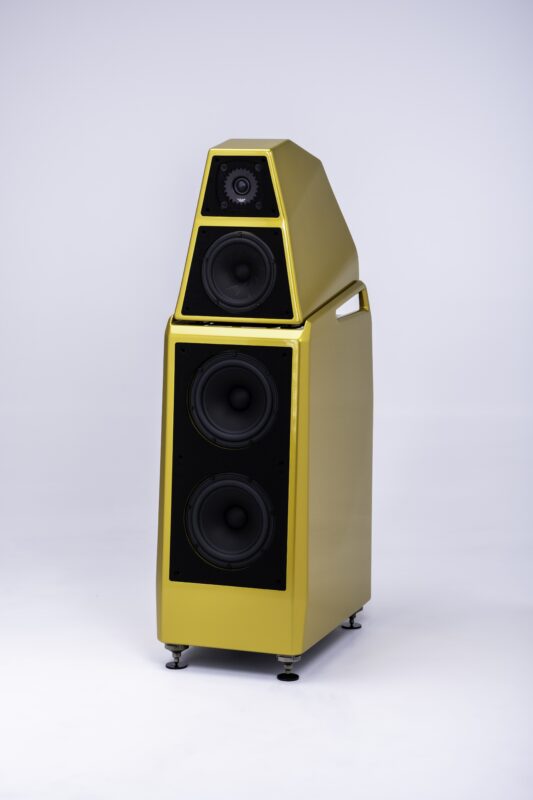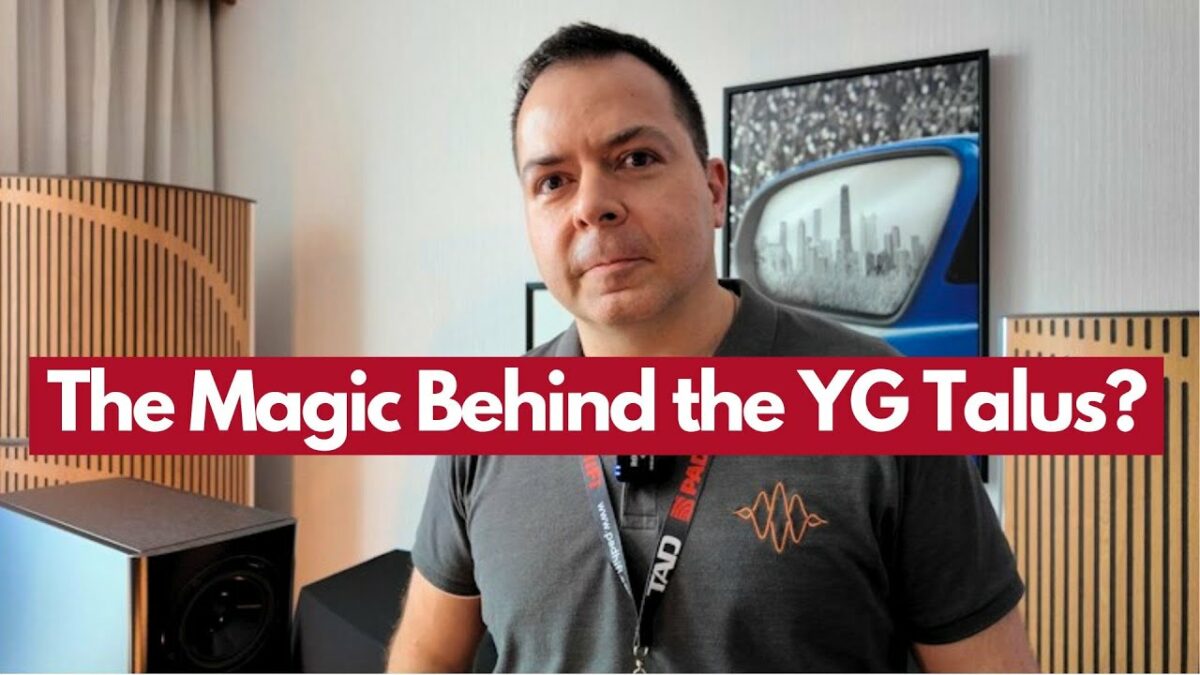T+A elektroakustik PA 2500 R integrated amplifier and MP 2000 R MKII media player
- REVIEW
- by Neil Gader
- Nov 22, 2017

T+A elektroakustik of Germany represents one of the most successful and technologically innovative manufacturers of electronics and loudspeakers in Europe. Staffed by top-notch engineers including specific teams for DSP and software development, and with the critically lauded flagship HV Series under its belt, T+A continues to see its fortunes rising in North America and in global markets. Its official title is Theory + Application—a moniker that doesn’t exactly fall trippingly from the tongue, hence the unforgettable acronym T+A. To paraphrase the J.M. Smucker slogan, “With a name like T+A, it has to be good.” Fortunately it is much more than “good.” Theory and application may be what goes into every T+A component but what comes out is some serious and faithful music reproduction.
The PA 2500 R integrated amplifier and MP 2000 R MKII media player are the heart of T+A’s new R-Series, the price/performance sweetspot in its catalog, nesting between the entry-level E Series and the superb flagship HV Series (featured in Issues 260, 268). In an historical footnote, R was also the first series in the company’s product line.
There are two integrated amps in the R-Series. The 100Wpc PA 2000 R is the more conventional in appearance. The PA 2500 R under review here is the highboy integrated amp, twice as tall and equipped with more power and connectivity. T+A states that the basic circuit layout is identical to that of the PA 2000; however, the PA 2500’s shielded, non-magnetic, machined aluminum chassis accommodates two of T+A’s new high-performance mains power supply units, with appropriately larger heat sinking. It delivers more than 140Wpc into 8 ohms, doubling into 4 ohms.

The amplifier design is a dual mono, fully balanced Class AB configuration, with a hefty Class A bias for the first 20–25 watts. Its high-voltage design stems from the HV Series, where all active gain stages are powered by very high voltage power-supply rails. Says T+A, “This allows each component to operate in a much smaller, more linear, and low distortion portion of its total transfer function.” This results in discrete amp circuits that perform more like valves than typical solid-state designs.
Premium internals abound in the R-Series, among them low-loss mica capacitors with silver electrodes, zero-induction resistors, precision low-noise audio resistors, and nickel-free gold- or rhodium-plated terminals specially manufactured for T+A. The company only uses relays—the relay-switched resistor-network volume control, for example—which are more costly than semiconductors but are freer from noise and distortion. Many of these components were developed for military applications, and therefore fulfill exacting requirements in quality and durability.
All the circuitry for controlling the machines is recessed into the solid aluminum faceplate, where the shielding effect is outstanding. In fact you won’t find a lot of plastic on T+A components. The company makes a conscious effort to avoid its use, particularly PVC. Metal is more easily recycled, and offers superior shielding for delicate circuitry.
R-Series style reveals cues both classic and contemporary. “Classic” certainly describes the top-panel porthole, which looks onto the impeccably laid out interior—a nostalgic visual that ’56 T-Bird fanciers will fawn over. Clean and authoritative and tactile, the front panel sports a bright, dimmable screen (VFD) and an aluminum rotary knob which controls volume level, and with a long push brings up the balance control. The display uses software that scales the fonts for easy viewing from a distance. It will also assist in navigating the panoply of on-screen menu functions. In addition, there’s a sophisticated adjustable loudness control that can be contoured for loud and soft listening based on speaker sensitivity and room size, plus basic bass/treble tone controls. (These can be fully bypassed.) In all, it conveys the sense of a well-oiled machine, the same “wheels and gears” nod to the past that makes mechanical media like LP playback so satisfying. Another in-house development is a new, fast data bus for data exchange between T+A components, which makes it possible to seamlessly control an entire system. For example, after adding the MP 2000 R, I could control both components with a single F 100 remote control handset or by using the T+A app for iOS (or Android). Plus there’s a headphone jack that automatically engages when headphones are connected. There are two phonostage options ($900) for the R-Series, mm or mc, which are pre-installed at the factory where they are adjusted according to the sensitivity, capacitance (mm) and impedance (mc) of the owner’s cartridge.
MP 2000 R MKII
Right from the outset, T+A makes it unambiguously clear that the MP 2000 R is not a computer; rather it’s a hybrid of CD transport and DAC with network media capability that can handle most, if not all of today’s digital sources—from discs to USB thumb drives to outboard storage such as NAS drives.
Its digital engine is a quad DAC configuration that uses a quartet of Texas Instruments (formerly Burr-Brown) PCM1795s for PCM. Among the most advanced 32-bit DACs developed by BB, these chips contain a total of eight DACs (four per channel). Significantly, the MP 2000 employs separate, fully optimized DSD and PCM signal paths for conversion of each type of signal—a rarity for most players and a project that took two full years to complete. It converts PCM signals up to 384kHz, and DSD conversion over USB uses a T+A-designed, fully discrete, true one-bit converter topology, with a high-precision resistor ladder and what T+A vouches as some of the industry’s most precise clocking. [The sound of T+A’s flagship PDP 3000 HV with the discrete one-bit converter decoding DSD was beyond spectacular.—RH] These are dual oscillator/clocks with very short signal paths prior to the converter stage to further reduce jitter. The digital converter sections of the MP 2000 R are fully galvanically de-coupled from the analog output stages.
Its DSD architecture is capable of DSD512 decoding. T+A engineers posit that the architecture could theoretically support up to DSD1024 but whether the marketplace will support that rate is another question. T+A’s high-speed oversampling DSP in front of the DACs combines these four DACs in a way that maximally cancels nonlinearities and noise. Options for the DSP setup include a foursome of oversampling filters—FIR Long/Short, Bezier, and Bezier/FIR.
Additionally, the MP 2000 R incorporates a streaming client (SCL) with Internet radio and music services for connection to a home network via LAN and WLAN, USB Master Mode and HD streaming, plus digital inputs for external sources (one USB device mode and four HD-SPDIF). Currently the T+A streaming client platform is only 25% filled, and is enabled for Deezer, Tidal, and eventually Roon, and perhaps MQA. DSD over the streaming client is not available at this time. Other assets include an FM digital tuner, and a Bluetooth streaming module.

Supporting these formats are an array of inputs including a pair of both coaxial and optical inputs, USB-A and B, and LAN. Mirroring the look of the amp, the front panel houses the front-loading CD drawer, which emerges from a subchassis that’s fully decoupled from the main enclosure; a highly readable display to the right and a rotary control knob handle routine CD playback commands and menu functions.
T+A engineers insisted on complete separation between the digital signal processing section and the analog circuitry, and developed an ultra-high-bandwidth analog output stage which delivers the signal to balanced XLR or unbalanced RCA outputs by means of the shortest possible path.
Operationally, there is a lot of sophistication here and it is worth giving the manual a read-through to unravel specific “T+A speak.” For example, on the remote control, the smile/frown emoticons represent removal and addition of favorite tracks for FM and Internet radio music services. Someday there’ll be voice recognition to simplify operations (instead of “Hello, Siri” how about “Hey, Heidi?”). For the graphically inclined, the control app is visually rather humdrum and could have faster reaction time. For example, in SCL mode it was slow to refresh during a change of servers and occasionally the buffer would hang up—I just hit reload and the problem solved itself.
These were minor issues overall that contrasted with the quick responses elsewhere.
A small wish I have for all multi-input digital switching gear is a “previous” or “back” button (just like the previous channel button on my TV remote) rather than having to cycle through the complete sequence of inputs in order to restore the one that was last used.
The Sound
Musicality is always where the rubber meets the road. This, the R-Series possesses in abundance. The sonic signature of the R-Series duo sat firmly in the camp of balance and control. Musical images were rooted in position and vocals were a model of stability. Symphony orchestras fanned out dimensionally from side-to-side and to the back of the hall. T+A doesn’t play fast and loose with tonal neutrality either, angling neither towards too much midrange bloom nor towards an accentuation of top-end detail.
Its most identifiable character trait was its wideband spectral response and dynamic extroversion. As I listened to selections from the CD of pianist Evgeny Kissin’s performance of Pictures at an Exhibition, the vivid dynamic window that the T+A gear opened onto this piece—from the most delicate, otherworldly pianissimo to the concussive conclusion at “The Great Gate of Kiev”—was breathtaking. Beyond sheer dynamics there existed fine gradations of timbre and touch from the player that further enriched the proceedings. I wasn’t just hearing the outpourings of the instrument but also the emotions of the performer.
Transients were, well, schnell. Singers like Rosanne Cash were captured with an immediacy that seemingly removed any distance or artifact between her voice and the microphone diaphragm—on her “Bells and Roses” track for instance. Similarly, during Harry Connick Jr.’s “A Nightingale Sang in Berkeley Square” there was a fly-on-the-wall level of intimacy between the listener, the singer, and the tenor sax accompaniment of Branford Marsalis. The resolution I perceived from these components fully illuminated these recordings in all their glory. Elevated resolution cuts both ways as well, so the T+A pair was also starkly revealing of poor source material or componentry. Mediocre tracks had no sugar coating; they were exposed in their entirety—warts and all.
The PA 2500 R delivered big, high-intensity wattage that never seemed to waver in responsiveness and extension regardless of the loads it faced. These included power-hungry speakers like the new TAD ME1 and the unique driver technology of the Manger (reviews forthcoming) and my own ATCSCM20SL compacts. Place the T+A in front of any of these speakers and it immediately got them up and dancing. Low-frequency response tightened, and notes held their pitch well into their resonant decay. Instruments like kettle drums, electric bass guitars, and kick-drums pressurized the room enough to clear the sinuses. The PA 2500’s treble range was buoyant with air and extension even as it conveyed a slightly cooler temperament, at least compared with tubes. But there was no etch or anything amounting to transistoritis—an issue with an earlier solid-state generation that still lives on in subtler ways.
Returning to the MP 2000 R, CD playback was superb. Tracks like “Autumn Leaves” from the Manhattan Jazz Quintet not only conveyed naturalistic low-level piano timbres and texture and ripe acoustic bass resonance, but also packed solo trumpet explosions that had me leaping for the volume control. It was a stinging rebuke to high-resolution advocates, whose knee-jerk reaction is to berate anything Red Book. Speaking of hi-res, Malcom Arnold’s Sussex Overture, (24-bit/176.4kHz HRx from Reference Recordings) was densely colorful, responsive, and texture-laden. The MP 2000 R shares the opulence in the upper mids and treble of my reference player the Lumin S1, although the sense of soundstage dimension is not quite as immersive. Still and all, considering that the MP 2000 R also includes a great CD transport, this could be the go-to winner for computer-animated audiophiles with large disc collections.
Perhaps the most unexpected surprise was that I found the phonostage to be a real contender rather than the second-string bench-warmer it might have been. It resides in Input 3 and was configured at the factory for my Sumiko Palo Santos Presentation moving-coil. Indeed, this is what can be so exasperating about the digital vs. analog debate. Listen to a very good PCM or DSD recording and some of the recent vinyl remasterings and most of us can find elements that make either approach musically and sonically valid. And then I placed the Mobile Fidelity One-Step remastering of the Bill Evans Trio Sunday at the Village Vanguard and suddenly all bets were off. Heads nodded knowingly. The players were performing in my room for goodness’ sake, occupying physical space. With the harmonics of their instruments swirling through the venue, suddenly it was an evening in 1961. Conclusion: a phono option that’s a no-brainer for the analog maven.
During my factory tour I developed a great admiration for the efforts of the T+A staff and the top-notch gear they were producing. I was certainly prepared to like the R-Series but really no more than any review subject that comes my way—in that sense I’m always an optimist. However, the PA 2500 R and MP 2000 R exceeded my expectations by a wide margin. Even though they can be purchased individually, I consider them an inseparable partnership, completing each other’s thoughts like identical twins would. In other words, wunderbar!
Specs & Pricing
PA 2500 R
Power output: 140Wpc into 8 ohms (280Wpc into 4 ohms, 560Wpc into 2 ohms)
Inputs: Analog, four RCA (optional phono), one XLR; Digital, three coax, three optical, USB, iPod USB
Outputs: Analog, one pre, (2) subwoofer
Dimensions: 18.1″ x 6.49″ x 15.9″
Weight: 32 lbs.
Price: $11,500
MP 2000 R MKII
Formats: Compact Disc: CD/DA, CD-R, CD-RW, CD-Text; Streaming Client: MP3, WMA, AAC, FLAC, OGG-Vorbis, FLAC (192 / 32 over LAN) and WAV (192 / 32 over LAN), AIFF (192 / 32 over LAN), ALAC (96/24 over LAN)
Inputs: Two coaxial and two optical, USB-A and B, LAN, R2 link (2)
Outputs: One RCA & one balanced XLR
Dimensions: 18.1″ x 3.2″ x 15.7″
Price: $9000
T+A elektroakustik GmbH
PlanckstraBe 9-11
D-32052 Hereford
ta-hifi.com

By Neil Gader
My love of music largely predates my enthusiasm for audio. I grew up Los Angeles in a house where music was constantly playing on the stereo (Altecs, if you’re interested). It ranged from my mom listening to hit Broadway musicals to my sister’s early Bob Dylan, Joan Baez, Beatles, and Stones LPs, and dad’s constant companions, Frank Sinatra and Tony Bennett. With the British Invasion, I immediately picked up a guitar and took piano lessons and have been playing ever since. Following graduation from UCLA I became a writing member of the Lehman Engel’s BMI Musical Theater Workshops in New York–working in advertising to pay the bills. I’ve co-written bunches of songs, some published, some recorded. In 1995 I co-produced an award-winning short fiction movie that did well on the international film-festival circuit. I was introduced to Harry Pearson in the early 70s by a mutual friend. At that time Harry was still working full-time for Long Island’s Newsday even as he was writing Issue 1 of TAS during his off hours. We struck up a decades-long friendship that ultimately turned into a writing gig that has proved both stimulating and rewarding. In terms of music reproduction, I find myself listening more than ever for the “little” things. Low-level resolving power, dynamic gradients, shadings, timbral color and contrasts. Listening to a lot of vocals and solo piano has always helped me recalibrate and nail down what I’m hearing. Tonal neutrality and presence are important to me but small deviations are not disqualifying. But I am quite sensitive to treble over-reach, and find dry, hyper-detailed systems intriguing but inauthentic compared with the concert-going experience. For me, true musicality conveys the cozy warmth of a room with a fireplace not the icy cold of an igloo. Currently I split my time between Santa Fe, New Mexico and Studio City, California with my wife Judi Dickerson, an acting, voice, and dialect coach, along with border collies Ivy and Alfie.
More articles from this editorRead Next From Review
See all
DS Audio DS-W3 Optical Cartridge
- May 10, 2024

2023 Golden Ear: Harbeth C7ES-3 XD Loudspeaker
- May 10, 2024

Wilson Audio Sasha V Loudspeaker
- May 07, 2024



















